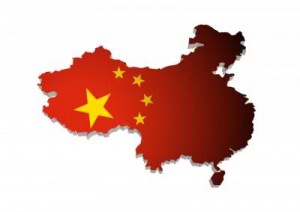 By Joshua Schroeder
By Joshua Schroeder
Recently there has been a lot of focus on near term fears of an economic hard landing in China. Talking heads continue to debate the short-term macro-economic outlook: Will real GDP growth fall below 6%? What monetary policy tools does China have at its disposal to continue its unprecedented rate of economic expansion? And will they deploy them?
In my opinion, the attention of investors should actually be on micro economic indicators that demonstrate how effective China may be at transitioning from an export driven model to a domestic driven growth economy. Given the recession fears in Europe, China’s largest export market, and slowing growth in the US, this transition is even more critical to ensuring China continues to move from a middle income to high income (GDP/Capita) country.
Below are four specific questions I will be looking to answer in trying to determine China’s success in transitioning to a consumption driven economy:
1. How effective is the Chinese government in establishing a social safety net and welfare state? This is important, as it should allow current savings rates for average Chinese to come down and free up disposable income for consumption. Furthermore it will help China achieve its goal of a “harmonious” society.
2. Is the minimum wage continuing to grow and what is the rate of currency appreciation? Over the past two years the minimum wage has increased at a 22% annual rate1 and continued more real wage growth is needed. Currently, China is the world’s second largest luxury goods market, but longer term a strong middle class will be needed to serve as the engine of growth. Lastly, higher labor costs will force companies to set up shop in the rural interior and will help bridge the rural / urban income divide and the resulting societal implications of huge income disparity.
3. Is China educating a sufficient number of skilled workers? With an aging population and a rapidly growing and modernizing economy, the number of skilled workers in China will be critical if it wants to effectively transition to a more consumption led economy.
4. Is there financial sector liberalization increasing availability to credit for the average Chinese consumer? The ability to responsibly finance large ticket purchases for an emerging middle class will be a key element to increasing the purchasing power of the Chinese population and critical to the economic transition.
If China is able to effectively navigate what will certainly be a turbulent growth path toward a consumption driven economy, I will begin to look more closely at consumer staples and retail sectors and less at the industrials and materials that have benefitted from recent Chinese stimulus directed at infrastructure and residential investment. Thank you for reading.
Source: Financial Times, China pushes minimum wage rises, January 4, 2012, www.FT.com
—————————————————————-
Twitter: @JoshuaSchroede2 and @seeitmarket Facebook: See It Market
Any opinions expressed herein are solely those of the author, and do not in any way represent the views or opinions of his employer or any other person or entity.
No positions in any of the securities mentioned at the time of publication.








